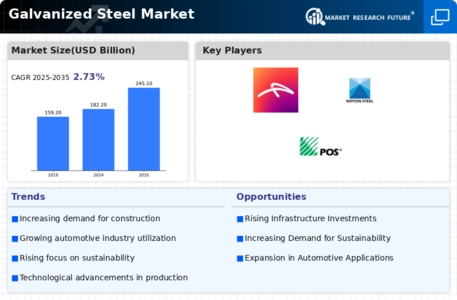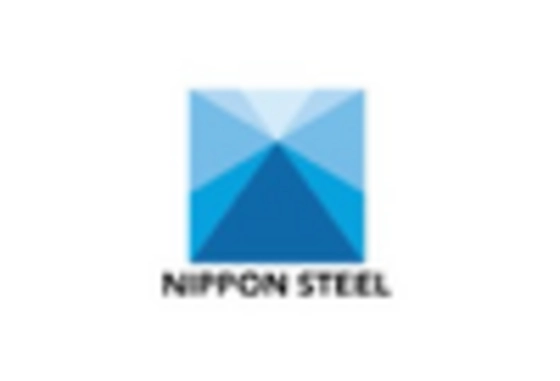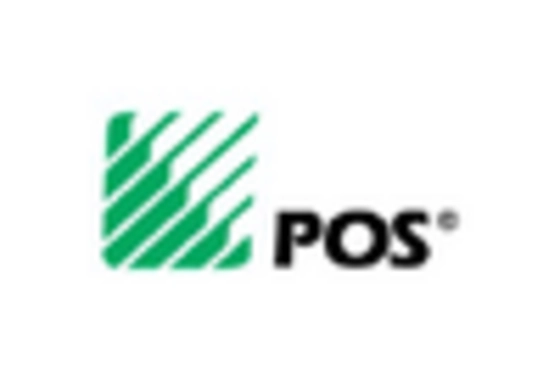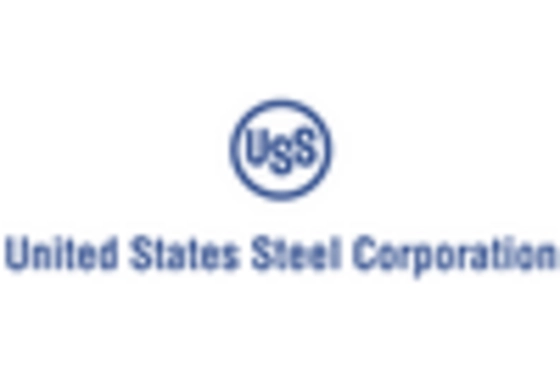Energy Sector Investments
Investments in renewable energy infrastructure are likely to bolster the Galvanized Steel Market. As countries strive to transition to sustainable energy sources, the demand for galvanized steel in wind turbines, solar panel frames, and other energy-related applications is expected to grow. In 2025, the renewable energy sector is projected to expand by approximately 8 percent, which could significantly impact the galvanized steel market. The material's resistance to environmental factors makes it suitable for outdoor applications in energy generation. This trend indicates that the galvanized steel market may see increased opportunities as investments in renewable energy continue to rise, creating a favorable environment for industry players.
Automotive Industry Growth
The automotive sector's expansion is another significant driver for the Galvanized Steel Market. With the increasing production of vehicles, particularly in emerging markets, the demand for galvanized steel is expected to rise. In 2025, the automotive industry is anticipated to witness a growth rate of around 4 percent, which could lead to a heightened requirement for lightweight and corrosion-resistant materials. Galvanized steel is extensively used in vehicle manufacturing for body panels and structural components, owing to its strength and durability. This trend suggests that as automotive production ramps up, the galvanized steel market will likely experience a corresponding increase in demand, benefiting manufacturers and suppliers alike.
Infrastructure Development
The ongoing expansion of infrastructure projects worldwide appears to be a primary driver for the Galvanized Steel Market. Governments and private sectors are investing heavily in roads, bridges, and buildings, which require durable materials. In 2025, the construction sector is projected to grow by approximately 5 percent annually, thereby increasing the demand for galvanized steel. This material is favored for its corrosion resistance and longevity, making it ideal for various applications in infrastructure. As urbanization continues to rise, the need for robust infrastructure solutions will likely propel the galvanized steel market further. The synergy between infrastructure development and the galvanized steel market indicates a promising trajectory for manufacturers and suppliers in this sector.
Construction Material Regulations
Regulatory frameworks surrounding construction materials are evolving, which may influence the Galvanized Steel Market. Stricter regulations aimed at enhancing safety and sustainability in construction are likely to drive the demand for high-quality galvanized steel. In 2025, it is anticipated that compliance with these regulations will become more stringent, pushing builders and contractors to opt for materials that meet these standards. Galvanized steel, known for its durability and low maintenance, aligns well with these regulatory requirements. This shift suggests that as regulations tighten, the galvanized steel market could experience a surge in demand, benefiting manufacturers who prioritize quality and compliance.
Technological Innovations in Manufacturing
Technological advancements in the manufacturing processes of galvanized steel are expected to serve as a catalyst for the Galvanized Steel Market. Innovations such as improved galvanizing techniques and automation in production lines are likely to enhance efficiency and reduce costs. In 2025, the adoption of advanced manufacturing technologies is projected to increase by around 6 percent, which could lead to higher quality products and lower prices for consumers. These improvements may also enable manufacturers to meet the growing demand for customized galvanized steel solutions. This trend indicates that as technology continues to evolve, the galvanized steel market may benefit from increased competitiveness and market share.

















Leave a Comment